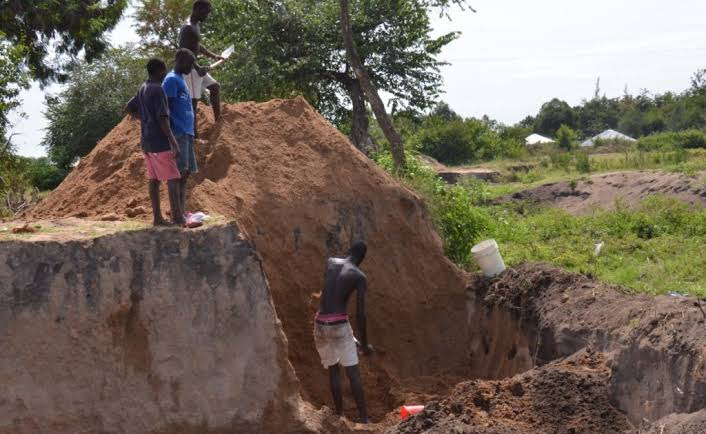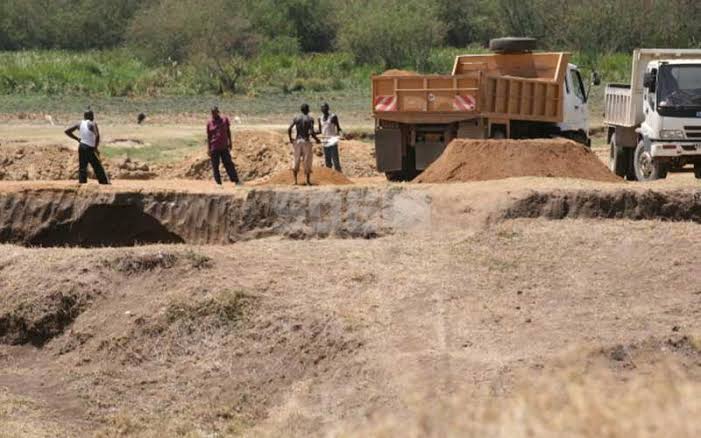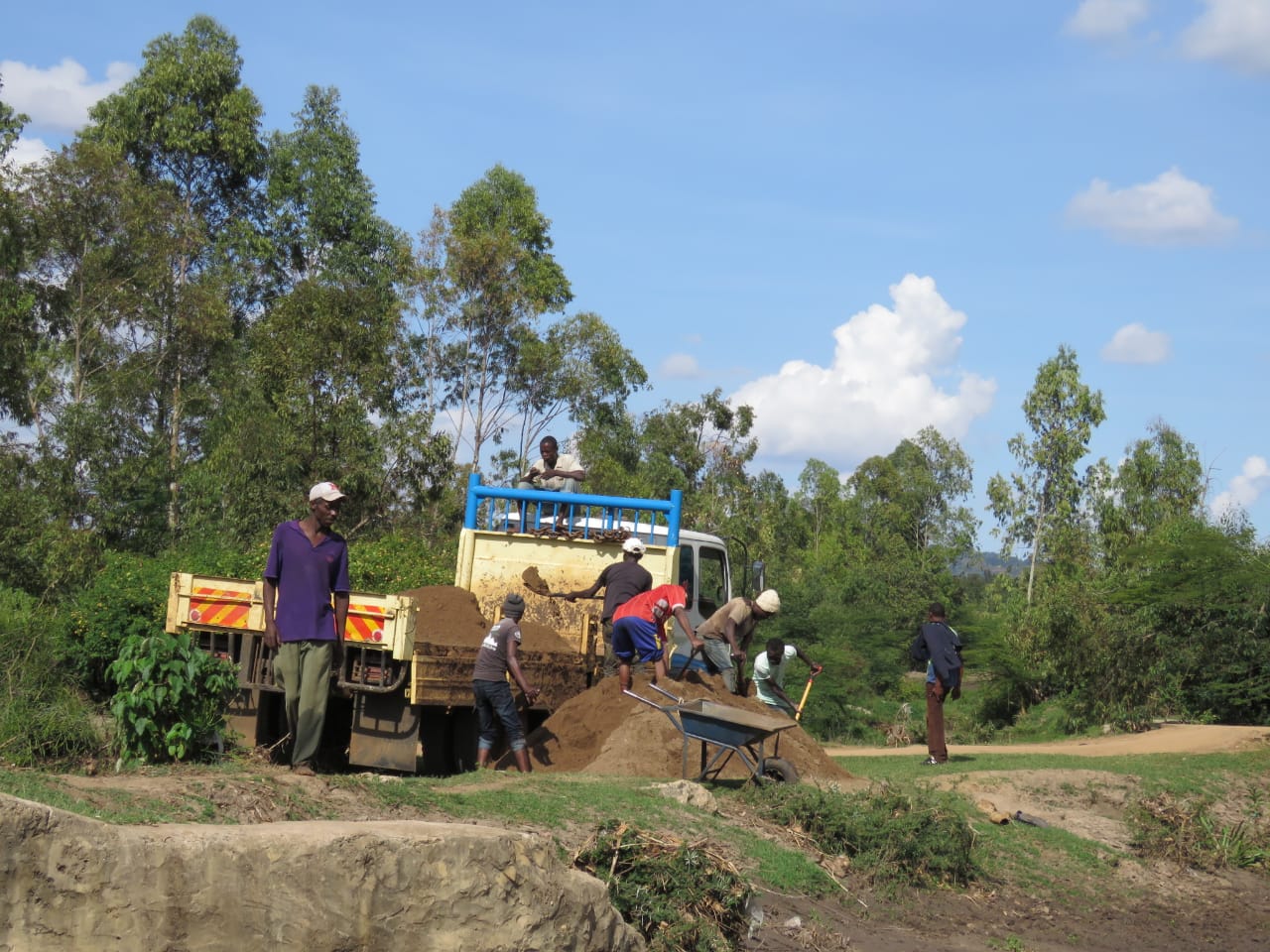
By Steve Misori I misori.village@gmail.com
Every day break, tens of lorries drive to the river banks near Lake Victoria within Wang’chieng’ ward, Homa Bay County in western Kenya and leave packed with sand.
Their activities support construction of houses in the neighbouring counties of Kisii and Nyamira and guess what? The 24-hour harvesting activity not only leaves protruding and ugly rocks behind but also bare rivers in the affected areas.
There is no denying that the constant sand harvesting could spell doom and untold climatic disaster for the residents of Kobuya, Kajiei, Kodumo and Kamwala villages.
Local leaders believe the sand harvesting business won’t end soon since it is preferably the major source of income for the unemployed youths despite exposing them to death traps and displacements.
Even as land owners release hundreds of tons to the truck owners for meagre pay, they believe such a move is better than sleeping hungry.
“Sand is all I cling on to survive. In a day, I can earn Ksh. 2400 (USD 18) to push through life. Sometimes, we harvest sand to the detriment of our grazing areas, leading to our animals lacking water. We are not doing this for fun – we are doing it because we have to feed our children and take them to school,” said a local resident who sought anonymity.

Fredrick Gaya, the director of Youth Empowerment Bridge Organization Africa (YEBO) believes there is unavoidable need to regulate the sand harvesting industry. He wonders why the government is not keen on coming up with regulations which could help protect the environment in general and the locals in particular.
“The villages which are victims of the sand harvesting activity are on the verge of collapse. The activity has swept away most sections of the river banks, threatening the lives of over 10,000 locals. The government should come up with specific regulations to guide this lucrative business,” Gaya told the locals during a meeting convened by the area chief, Mathews Onyango at Chuoye Beach.

Gaya, an environmental activist, says that sand harvesting should be controlled since it can deplete water catchment areas. He pleaded with locals to strike a balance between it and environmental conservation. He challenged the locals to look at the bigger picture of the environment without focusing on the short-term economic value.
“Sand harvesting employs a number of our youths and the construction of buildings is not ending now. However, there should be regulations on recommended distance that the activity should operate from with regard to homes. This activity leads to the drying up of aquifers, river bed erosion, water pollution together with loss of valuable animal species,” he added.
While weighing in into the looming crisis, Onyango, warned local leaders against reading politics in whatever action the government takes to protect the environment. His sentiments were echoed by Victor Obuya, the area Member of County Assembly, who asked the local residents to support the county government’s efforts in mitigating the effects of floods.
“Politicians should give government room to address the concerns of the people. Sand harvesting is already piling uncontrolled pressure on rivers and flood plains, leading to displacement, erosion and emergence of water borne diseases such as cholera, typhoid and bilharzia,” said the chief.
According to Erick Dinda, a site engineer, there is serious need for an inventory to understand how much sand is left based on the region, what damage has been done and the best remedy for the damage.
“Regrettably, there exists no record to show how much sand will be needed in future development. There is also no record of the amount of sand in stock, the damages already caused by the harvest and mitigating measures in place,” he said.
Dinda expressed confidence the locals comply with government restrictions since doing so will conserve water and protect livelihoods.
The massive destruction to the environment witnessed in this area comes at a time when experts have called on ordinary citizens to safeguard their immediate environments to help achieve the Sustainable Development Goals (SDGs) with a lot of them expressing fears that the world is lagging in most of the 17 SDGs.
SGD 15 as a case in point aims to protect, restore and promote sustainable use of terrestrial ecosystems, sustainably manage forests, combat desertification, and halt and reverse land degradation and halt biodiversity loss.









